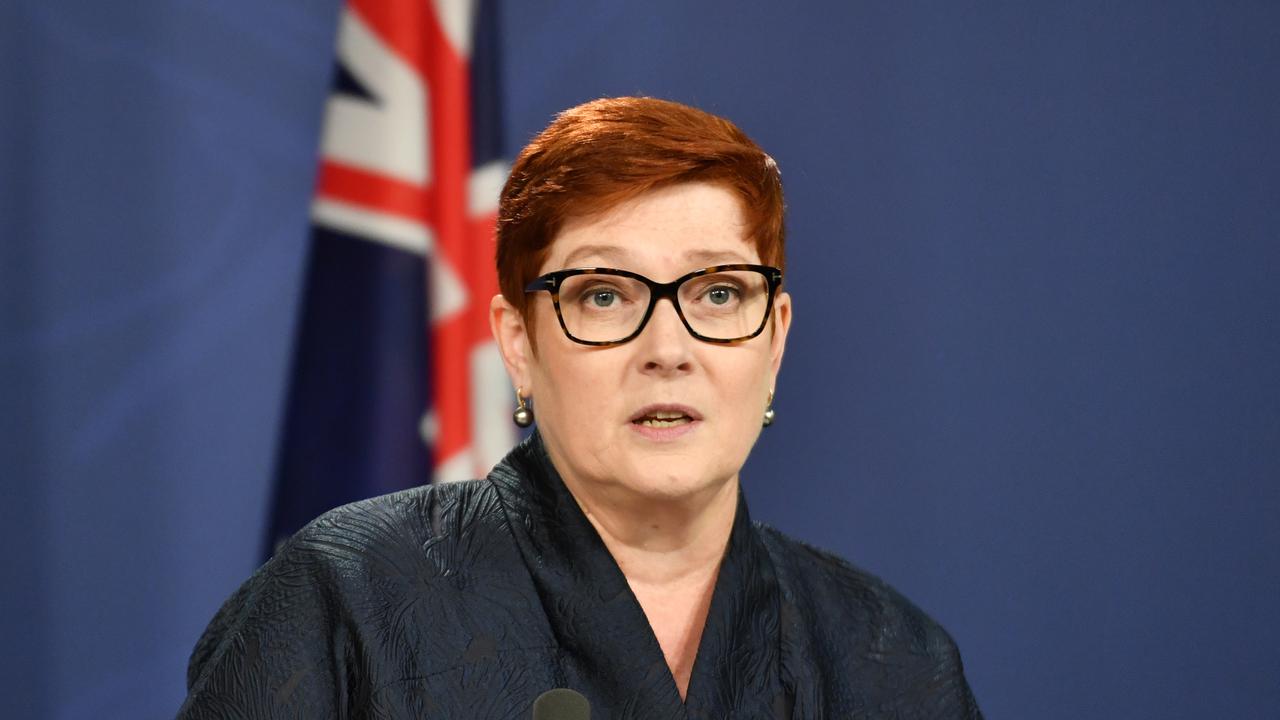WHAT WAS CLAIMED
The coalition government has narrowed the gender pay gap.
OUR VERDICT
Misleading. The gender pay gap narrowed under the coalition but experts say the primary driver was workplace equality laws introduced by Labor in 2012.
Minister for Women Marise Payne used a radio interview on International Women's Day to claim the coalition government has made life easier for female workers by narrowing the gender pay gap.
However, her claim is misleading. While the pay difference between men and women has narrowed since the coalition came to power in 2013, the impact of new government policies on narrowing the gap is limited. Several experts told AAP FactCheck that the primary driver for the narrowing pay gap was the Workplace Gender Equality Act, which came into force in 2012 under the previous Labor government.
Senator Payne, who is also Australia's foreign minister, made the claim on March 8 on Sydney's 2GB radio after a question about whether her government had made life for women in Australia "better than previous Labor governments".
She said: "We have narrowed the gender pay gap. It's currently 13.8 per cent and had been 13.4 (per cent), and that was damaged of course by COVID." (audio mark 7min 43sec)
When contacted by AAP FactCheck about the basis of the claim, Senator Payne's office said in a statement: "The Morrison government drove down the gender pay gap to its lowest level on record - 13.4 per cent in November 2020. It currently sits at 13.8 per cent, which is 3.6 percentage points lower than we inherited from Labor in 2013."
The term 'gender pay gap' refers to the difference between the average pay of men and women in the workforce. In Australia, it is calculated by comparing the average weekly ordinary full-time earnings of men and women across all industries using data published by the Australian Bureau of Statistics (ABS) (see table 2). The result is expressed as a percentage, representing the average premium paid to men.
Reasons cited for the gender pay disparity (page 11-12) include the disproportionate burden of family care shouldered by women, an under-representation of women in senior roles, recruitment and promotion processes that discriminate, and sexual harassment at work.
The gender pay gap is not the same as unequal pay, which refers to the illegal practice of paying men and women different amounts for doing the same or similar work.
Statistics on the gender pay gap are collected and published bi-annually by the Workplace Gender Equality Agency (WGEA), a government agency established in 2012 under the act to promote and improve gender equality in Australian workplaces.
At the time of writing, the agency put the gender pay gap at 13.8 per cent, as accurately stated by Senator Payne. It also publishes a chart of historical gender wage gap data going back to 2011. AAP FactCheck replicated this chart using ABS seasonally adjusted earnings data and extended the timeframe of the data back to 2000.
The data shows the gender pay gap hit a low of 13.4 per cent in November 2020. It rose to 14.2 per cent in May 2021 before falling back to 13.8 per cent in November 2021.
Senator Payne is therefore also correct to identify that the gender pay gap was 13.4 per cent prior to the COVID-19 pandemic. However, the minister's claim that the coalition government has narrowed the gap is less clear cut.
Three experts told AAP FactCheck that the core driver of the narrowing gender pay gap over the past decade was the Workplace Gender Equality Act, which requires private-sector companies with 100 or more employees to report annually against six gender equality indicators (page 5) including gender composition of the workforce, pay differences between men and women, and sex-based discrimination.
Under the terms of the act (section 19), the minister was required to set new reporting standards for employers before April 1, 2014.
The legislation was introduced by Julia Gillard's Labor government in 2012 despite opposition from the coalition.
An October 2021 report by the Global Institute for Women's Leadership (GIWL) - a research and advocacy institute founded by Ms Gillard and based at the Australian National University - says the gender pay gap has steadily declined since reporting requirements were enacted in 2014. This reversed an upward trend between 2007 and 2014 (page 10).
One of the report's authors, GIWL research associate Miriam Glennie, told AAP FactCheck the Workplace Gender Equality Act appeared to have had an immediate positive impact that was now waning.
"When first introduced, reporting under the act served as a wake-up call on pay inequality, as many organisations saw their own gap for the first time. However, as there is no external transparency on those gaps, and minimum standards under the act are low, there is limited pressure for organisations to continue to progress," Dr Glennie said in an email.
Professor Carol Kulik, a human resources management expert at UniSA, said the act and the Workplace Gender Equality Agency had played a significant role in the narrowing of the gender pay gap by requiring organisations to review and report their data.
"You can't monitor change in a metric you haven't calculated in the first place. So I give the act, and the WGEA in particular, 'full props' on this point," she told AAP FactCheck in an email.
However, Prof Kulik said reporting requirements have also had the effect of creating a herd mentality on gender pay gaps, where some organisations are motivated only to "hide in the herd" and avoid being at the bottom.
Professor Alan Duncan, director of the Bankwest Curtin Economics Centre at Curtin University and a co-author of research about the gender pay gap, said the 2012 legislation was a key driver of the narrowing pay disparity between men and women in Australia.
"I think we've seen, since the introduction of the act, that there has been progress. The progress has been relatively slow but there has been progress," he told AAP FactCheck in a phone interview.
Prof Duncan said in addition to the impact of the 2012 legislation, public attitudes on workplace diversity were shifting, as were the expectations organisations put on themselves.
In a report published in December 2021 (page 4), the WGEA made four key recommendations to accelerate progress on workplace gender equality. One of the recommendations - also supported by other gender pay gap researchers - is for data on gender pay gaps to be published at employer rather than industry levels.
In 2018, RMIT ABC Fact Check investigated a similar claim by Prime Minister Scott Morrison that the gender pay gap had fallen under the government's policies. It found the statement was an "overreach".
The Verdict
Marise Payne correctly identified that the gender pay gap had fallen under the coalition - but it is misleading to claim her government is responsible for the change.
Multiple experts told AAP FactCheck that the 2012 Workplace Gender Equality Act and the resulting Workplace Gender Equality Agency were the primary drivers of the narrowing gap. The act was introduced by the then Labor government and opposed by the coalition. Other workplace pressures and industry changes may have also reduced the gap, but none are directly attributable to the coalition government.
Misleading – The claim is accurate in parts but information has also been presented incorrectly, out of context or omitted.
AAP FactCheck is an accredited member of the International Fact-Checking Network. To keep up with our latest fact checks, follow us on Facebook, Twitter and Instagram.












